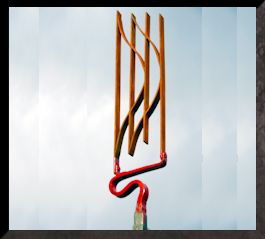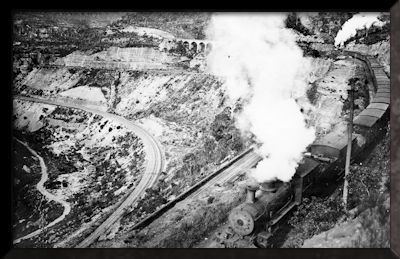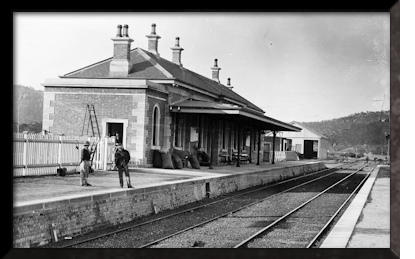|
|
|
|
||||||
|
|
ESKBANK STATION OPENS
This is all true, but Lithgow was never located in an obvious path for rail. Thomas Brown, with other notable families, lobbied for the rail to come through Lithgow and out to Wallerawang. They managed to persuade the government of the worth of mineral and pastoral resources, even though getting down off the Newnes Plateau necessitated the construction of the enormously expensive, if marvellous, Zig Zag Railway. Once the rail was through, Thomas Brown built a siding on the line, at Coal Stage Hill (close to the site of the former Eskbank Locomotive Depot), which served his Eskbank Colliery and, later, the Eskbank Iron Works. The name of the siding was changed to ‘Esk Bank’ in August 1876. The sandstone Eskbank Station was opened on 1st March 1882 following the duplication of the Western Line through Lithgow in October 1880. It was designed by John Whitton in the Victorian Italianate style favoured for important railway buildings in NSW.
For more than four decades Eskbank was the centre of railway activities in the Lithgow Valley, and for steam operations in and out of the Valley. Trains started or terminated their journeys at Eskbank and through-trains were timed to stop there. During the years the Blast Furnace was running, the entire Eskbank area was crisscrossed with private rails, carrying minerals, coal and manufactured goods. However the importance of Eskbank Station waned in 1925 when the shopkeepers and publicans finally mounted a case for the passenger station being closer to them, and Lithgow Station was built 1 kilometre to the west. Eskbank Station was the Lithgow Goods Depot and Station Master’s headquarters from the mid 1920s until the 1980s. Now a depot for railway maintenance activities in the district but the oldest buildings are leased by the State Mine Heritage Park and Railway, which is working hard to revive rail activities at the site. SOURCESTony Griffiths, The Small Arms Factory and Its People, 2009 NSW Office of Environment and Heritage, Heritage Listing, Eskbank Railway Station Group, 2009 Home | About | Chronological List | Contact Email
|
|
||||||
|
|
|
|



